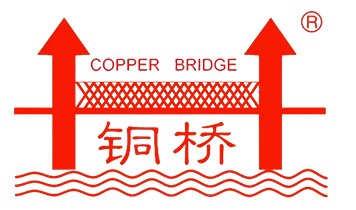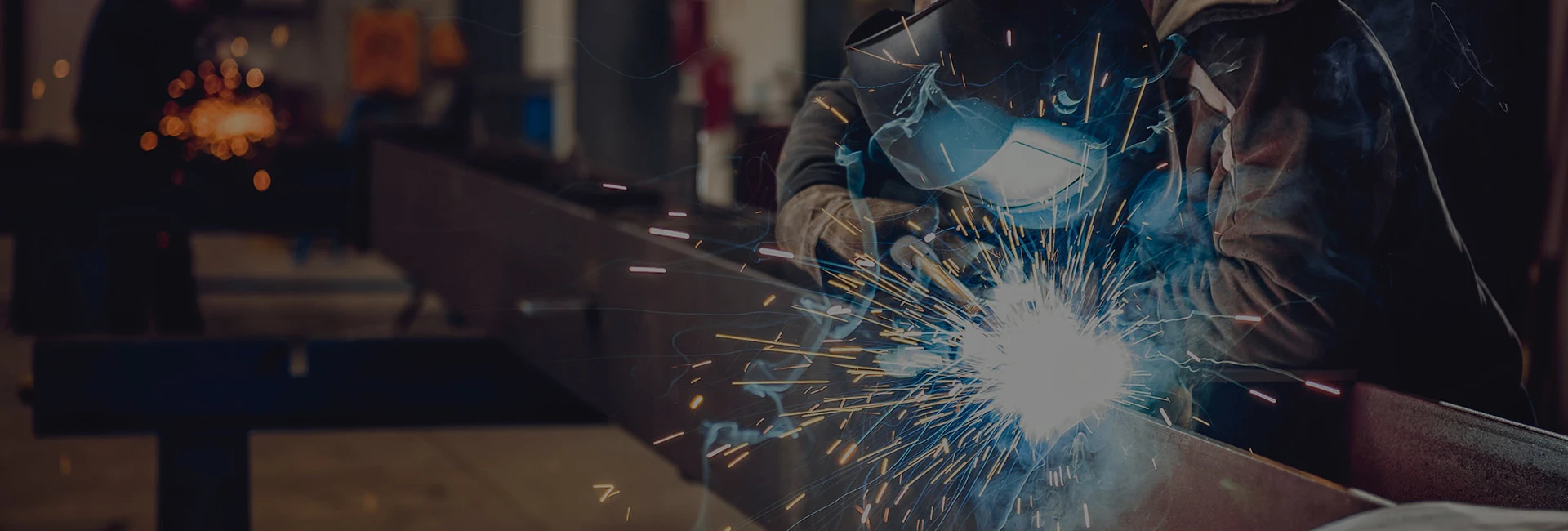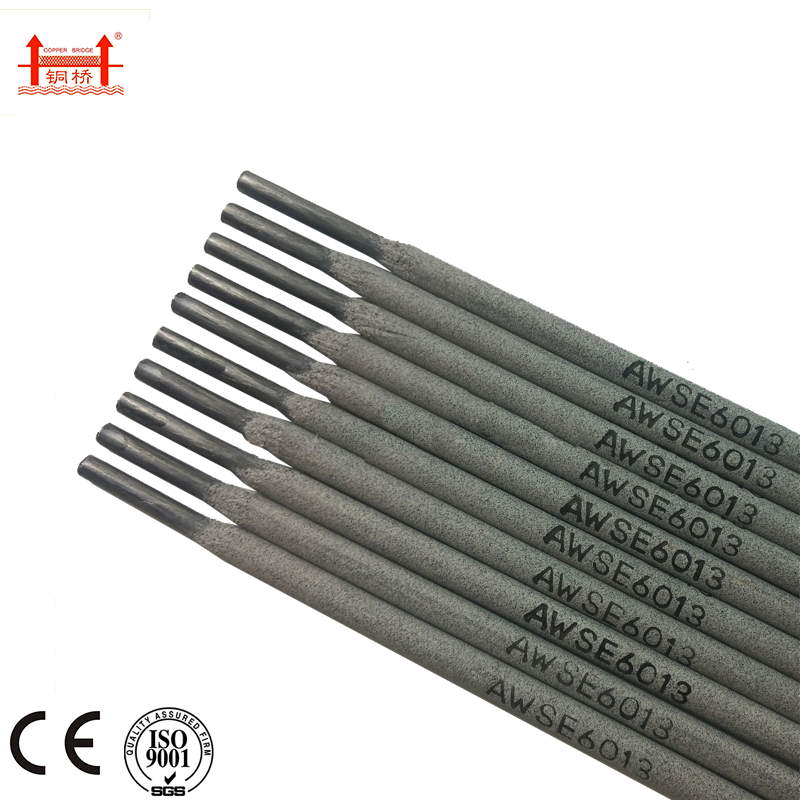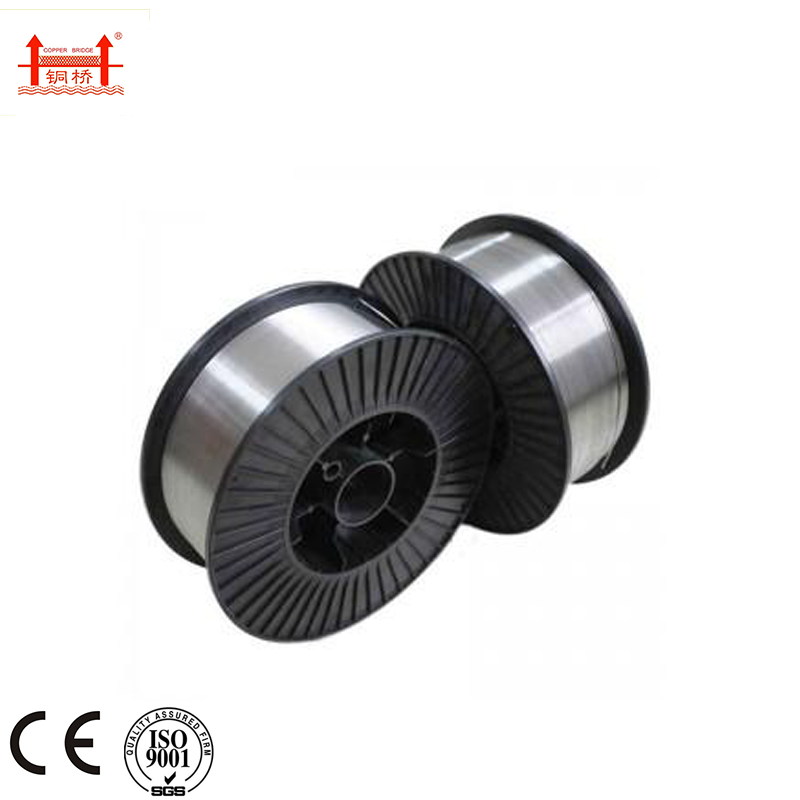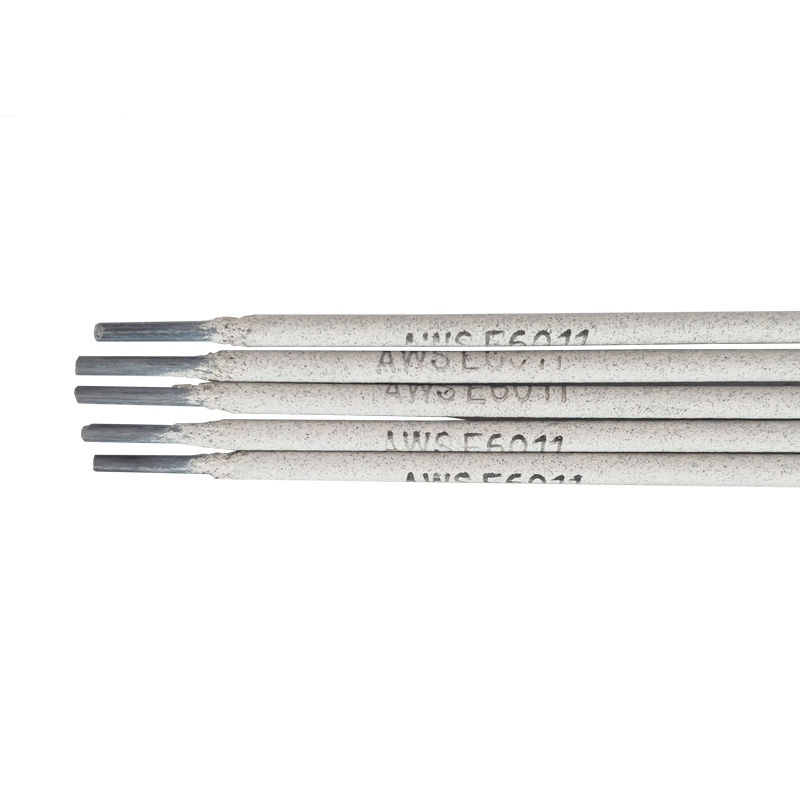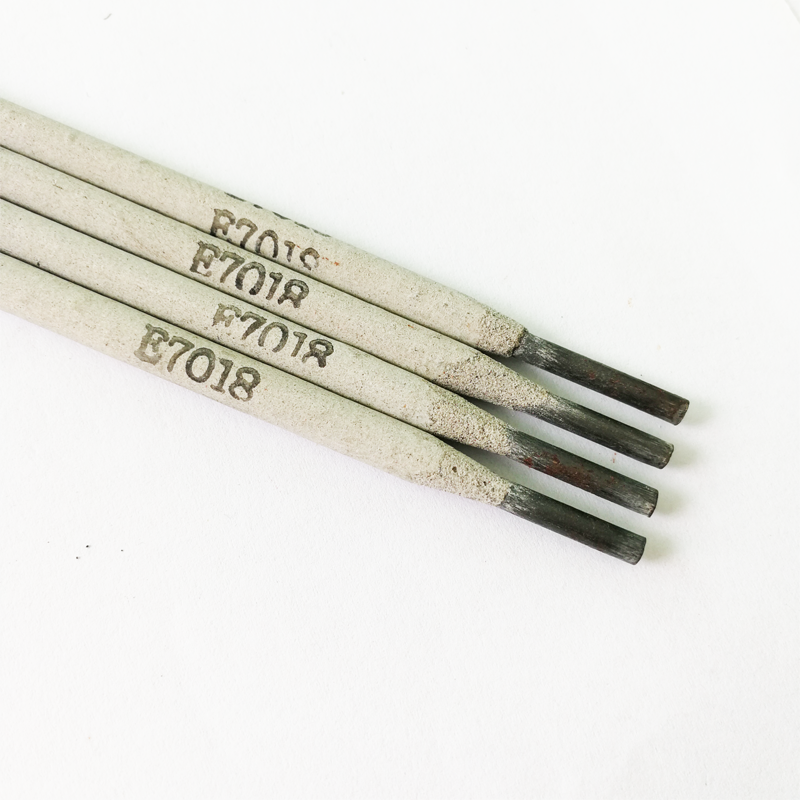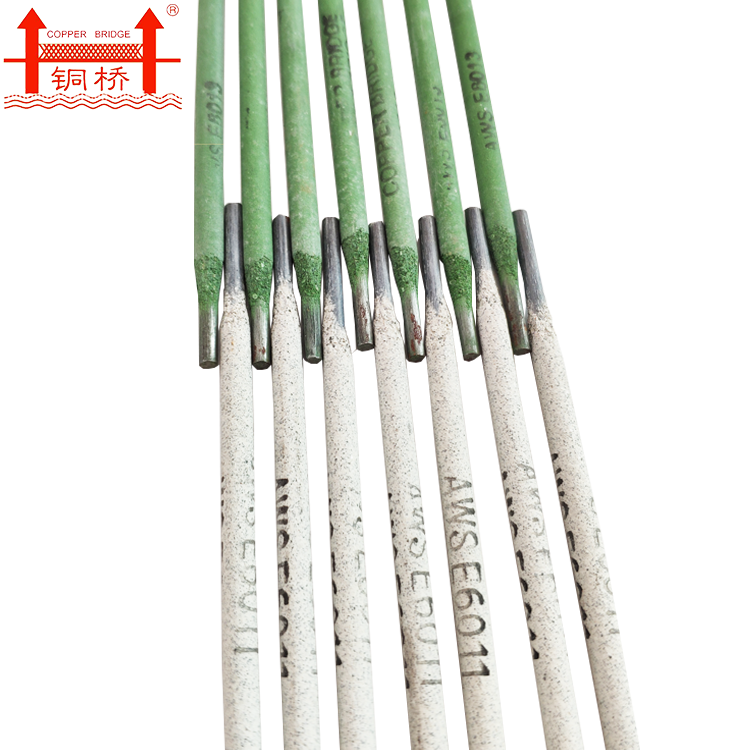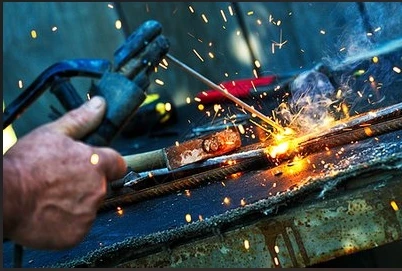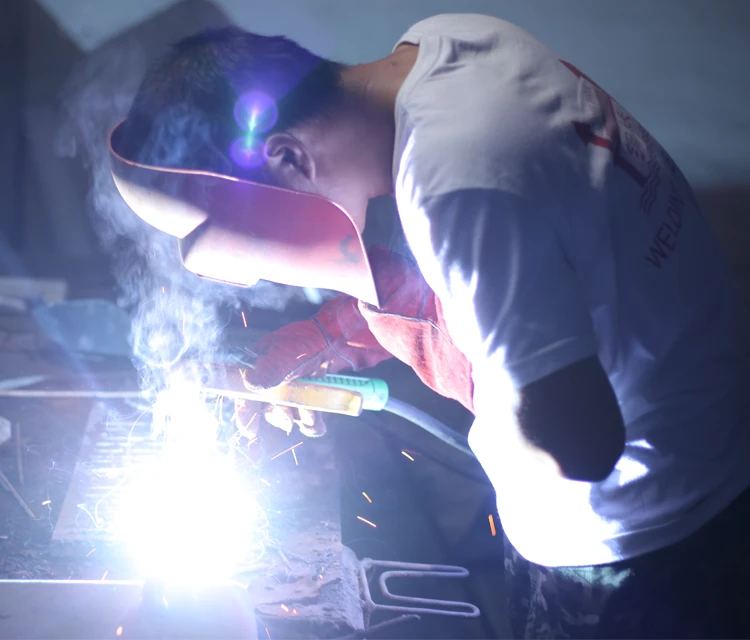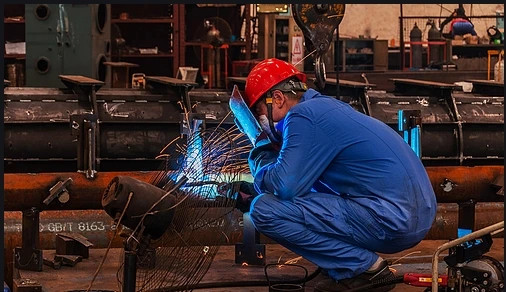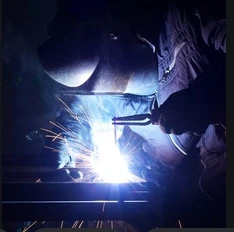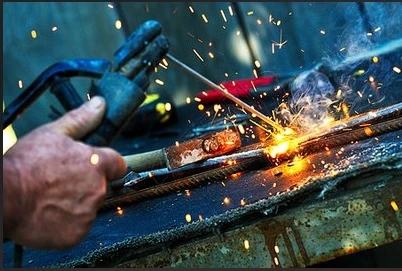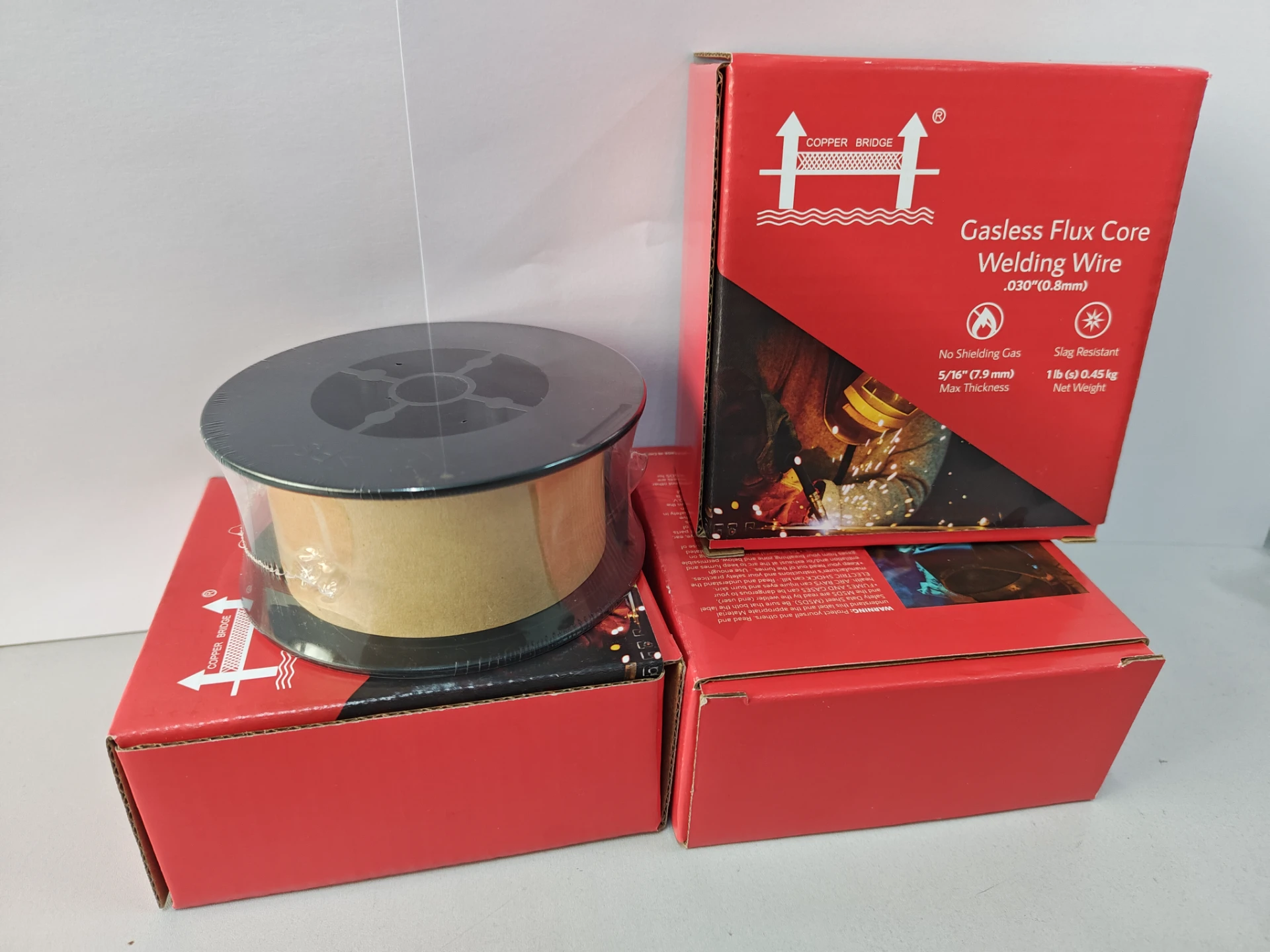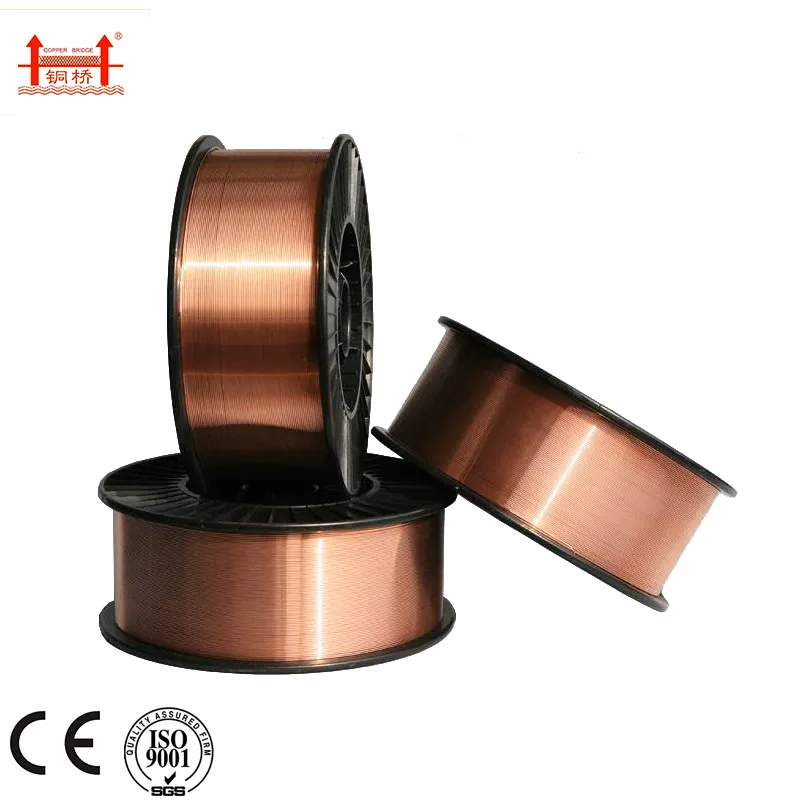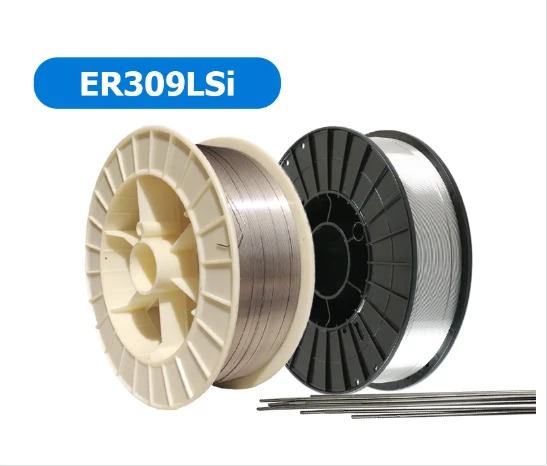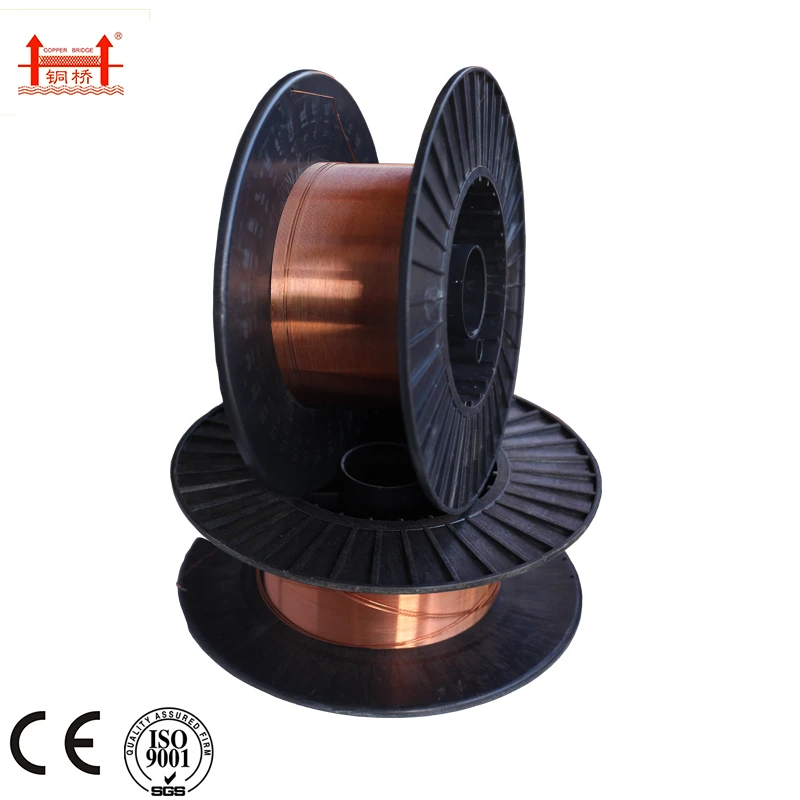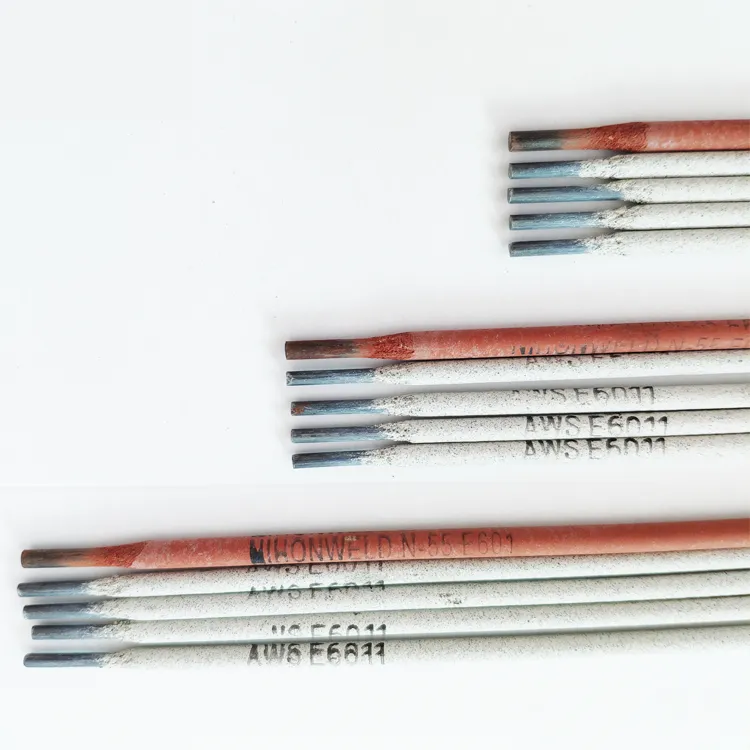Versatile 6013 AC Welding Rods | Easy to Use | All Sizes
Aug . 09, 2025 05:40
In the vast landscape of welding consumables, the 6013 AC Welding Rod stands out as a true workhorse, renowned for its exceptional versatility, ease of use, and suitability for a wide array of applications, particularly with AC power sources. As a leading product, the China 6013 Ac Welding Rod 1/8 3/32 5/32 embodies the pinnacle of this electrode type, offering consistent performance and reliable results. This comprehensive guide delves deep into the characteristics, applications, manufacturing processes, and market insights surrounding this indispensable welding tool, ensuring a holistic understanding for professionals and enthusiasts alike.
Industry Trends and Market Dynamics for E6013 Electrodes
The global welding consumables market, valued at approximately USD 14.5 billion in 2022 and projected to reach USD 20 billion by 2030 (CAGR of ~4.1%), continues to be driven by infrastructural development, manufacturing growth, and maintenance activities across various sectors. Within this market, flux-coated electrodes like the e 6013 welding rod maintain a significant share, particularly in regions with established fabrication industries and widespread access to AC welding machines. The demand for user-friendly electrodes that deliver consistent results on mild steel, even with less experienced welders, keeps the 6013 welding rod highly relevant. Current trends show an increasing emphasis on:
- Ease of Use: The self-peeling slag and smooth arc of 6013 welding rods reduce post-weld cleaning and operator fatigue, aligning with the industry's need for efficiency.
- Versatility: Its ability to perform well in all positions (flat, horizontal, vertical up/down, overhead) and on various joint types makes it highly adaptable for diverse job sites, from repair work to light fabrication.
- Cost-Effectiveness: While specialized electrodes exist for high-strength or critical applications, the 6013 AC Welding Rod offers an excellent balance of performance and affordability for general-purpose welding.
- Sustainability: Manufacturers are increasingly focusing on reducing fume emissions and developing more environmentally friendly coating materials, an area where continuous improvement for products like the 1 16 e6013 welding rod is ongoing.
- Accessibility: The prevalence of AC power sources in workshops and homes worldwide ensures a constant demand for electrodes specifically designed for them, such as the 1 8 6013 welding rod and 3 32 welding rod 6013.
Technical Parameters and Specifications of 6013 AC Welding Rod
The success of the 6013 welding rod lies in its meticulously engineered composition and performance characteristics. As classified by AWS A5.1/A5.1M:2017, the E6013 electrode is a mild steel, all-position, rutile-type electrode suitable for both AC and DC (Direct Current) welding. Its coating primarily consists of titanium dioxide (rutile), which provides a soft, stable arc and easily removable slag.
Key Mechanical Properties (Typical Values for Weld Metal):
- Tensile Strength: Typically ranges from 60,000 psi (415 MPa) to 70,000 psi (485 MPa). This indicates the maximum stress the material can withstand while being stretched or pulled before breaking.
- Yield Strength: Around 50,000 psi (345 MPa). This is the stress at which a material begins to deform plastically (permanently).
- Elongation: Generally 17-22% in 2 inches. Elongation measures the ductility of the weld metal, or its ability to deform without fracturing. Higher elongation indicates better toughness and resistance to cracking.
- Impact Strength (Charpy V-Notch): Not typically specified for general-purpose E6013 electrodes as they are not designed for critical impact applications, but can range from 20-30 ft-lbs at 0°C (32°F).
Typical Chemical Composition of Weld Metal:
- Carbon (C): 0.10% max
- Manganese (Mn): 0.30-0.60%
- Silicon (Si): 0.20% max
- Sulfur (S): 0.035% max
- Phosphorus (P): 0.040% max
- Other elements (e.g., Titanium, Potassium, Sodium from rutile coating): Present in trace amounts from the flux.
The smooth, consistent operation is largely due to the arc stabilizers in the rutile coating, making it forgiving for beginners and effective for challenging positions. Different sizes, such as the 1 16 inch 6013 welding rod, 3 32 welding rod 6013, and 1 8 6013 welding rod, require specific amperage ranges for optimal performance, as detailed in the table below. The choice of diameter often depends on the material thickness, joint configuration, and desired penetration.
Common 6013 Welding Rod Diameters and Recommended Amperage Ranges (AC Polarity)
| Electrode Diameter | Metric (mm) | Imperial (in) | Recommended Amperage Range (AC) | Typical Applications |
|---|---|---|---|---|
| 1 16 6013 | 1.6 | 1/16 | 30-60 A | Thin sheet metal, intricate work, tack welding. Especially the 1 16 inch 6013 welding rod. |
| 3 32 welding rod 6013 | 2.4 | 3/32 | 60-100 A | Light fabrication, general repair, thin to medium gauge material. |
| 1 8 6013 welding rod | 3.2 | 1/8 | 80-130 A | Medium to heavy fabrication, general purpose, structural work. The most common 6013 1 8 welding rod. |
| 5/32" | 4.0 | 5/32 | 110-180 A | Heavy fabrication, thicker materials, higher deposition rates. |
| 3/16" | 4.8 | 3/16 | 150-220 A | Very heavy fabrication, high deposition. |
Note: Amperage ranges are approximate and may vary slightly based on specific electrode brand, welding position, and joint configuration. Always consult the manufacturer's recommendations.
Application Scenarios and Technical Advantages
The broad appeal of the 6013 AC Welding Rod stems from its adaptability across a multitude of industries and specific welding tasks. Its inherent characteristics offer significant technical advantages, making it a preferred choice in many situations.
Typical Application Scenarios:
- General Fabrication: From gates and fences to light structural frames, the 6013 welding rod excels in workshop environments where mild steel is the primary material. Its ease of starting and consistent bead make it ideal for varied projects.
- Repair and Maintenance: Widely used for fixing agricultural equipment, automotive components (non-critical), garden tools, and other household items. Its ability to weld thin material without excessive burn-through is a key advantage.
- Shipbuilding (Non-Structural/Fit-up): While not typically used for primary structural members, 6013 welding rods can be employed for non-critical attachments, fit-up work, and general repairs in shipyards.
- Pipelines (Non-Pressure/Utility): For water, gas (low pressure), and drainage pipelines, especially those not subjected to high pressures or critical stresses, the 6013 AC Welding Rod offers a convenient and effective solution.
- Sheet Metal Work: The smooth arc and easy slag removal make it highly suitable for welding thin gauge sheet metal, preventing excessive distortion. This is where a 1 16 inch 6013 welding rod truly shines.
- Automotive Exhaust Systems: For custom exhaust fabrication or repairs, its clean weld and ease of use are beneficial.
- HVAC Ducting: Fabrication of air ducts and ventilation systems often utilizes 6013 welding rods due to their consistent performance on thin steel.
Technical Advantages of 6013 AC Welding Rods:
- Excellent Arc Stability: The rutile coating provides a very smooth, soft, and stable arc, which is easy to strike and maintain, even with lower open circuit voltage (OCV) AC machines. This stability minimizes arc wander and spatter.
- Good Bead Appearance: Welds produced with 6013 welding rods typically have a smooth, aesthetically pleasing appearance with fine ripples, requiring minimal post-weld grinding.
- Easy Slag Removal: The flux creates a brittle, self-peeling slag that often detaches on its own as the weld cools, significantly reducing clean-up time and effort.

- All-Position Welding Capability: From flat to overhead, the 6013 welding rod performs reliably in all positions, offering great flexibility for different joint configurations and project requirements. This is particularly valuable for complex fabrication or repair tasks.
- Low Spatter: Compared to some other electrode types, 6013 AC Welding Rods produce minimal spatter, leading to cleaner welds and less material waste.
- Shallow Penetration: The relatively shallow penetration profile makes it ideal for welding thin materials without burning through, and for applications where dilution with the base metal needs to be controlled. This is crucial when using a 1 16 inch 6013 welding rod on delicate stock.
- Low Fume Generation: While all welding produces fumes, 6013 welding rods are generally known for producing relatively lower and less irritating fumes compared to some basic electrodes, contributing to a better working environment.
- Forgiving Arc: Its wide operating window and tolerance for slight variations in arc length make it very forgiving, especially for novice welders or those working in less-than-ideal conditions.
- AC and DC Compatible: Although primarily known for AC performance, it also runs well on DC, offering additional flexibility. For example, the 6013 welding rod 1 8 can be used with both polarities.
These advantages collectively cement the 6013 AC Welding Rod's position as a go-to choice for general-purpose mild steel welding, emphasizing both efficiency and quality in a single consumable.
The Meticulous Manufacturing Process of China 6013 Ac Welding Rod 1/8 3/32 5/32
The production of high-quality welding electrodes, such as the China 6013 Ac Welding Rod 1/8 3/32 5/32, is a sophisticated process involving precise material formulation, advanced manufacturing techniques, and stringent quality control. This multi-stage process ensures that each rod delivers consistent performance, arc stability, and metallurgical integrity.
Manufacturing Process Flow:
- Raw Material Preparation:
- Core Wire: High-quality low-carbon steel wire rods are drawn to precise diameters (e.g., for 1 16 6013, 3 32 welding rod 6013, or 1 8 6013 welding rod). The wire must have consistent chemical composition to ensure good electrical conductivity and melting characteristics.
- Flux Ingredients: Various raw materials, including rutile (titanium dioxide, for arc stability and slag properties), cellulose (for gas shielding), carbonates (for arc stabilization and deoxidation), silicates (for slag formation), and deoxidizers, are meticulously weighed according and precisely mixed to a specific formulation. This blend is critical for the electrode's performance, bead shape, and mechanical properties.
- Slurry Preparation:
- The dry flux mixture is blended with a binder (typically sodium or potassium silicate) and water to form a uniform, paste-like slurry. The consistency of this slurry is vital for proper extrusion and coating adhesion.
- Core Wire Straightening and Cutting:
- The coiled core wire is straightened and cut to the specified lengths (e.g., 300mm, 350mm, 450mm depending on rod diameter and market).
- Eccentricity Inspection:
- Before coating, each cut wire is inspected to ensure it is perfectly straight and free from defects that could lead to uneven coating.
- Extrusion Coating:
- This is the heart of the process. The straightened core wire is fed into an extrusion press, where it is forced through a die while simultaneously being coated with the prepared flux slurry. The die precisely controls the thickness and concentricity of the flux coating around the core wire. Achieving a uniform coating is paramount for consistent arc performance and weld quality. This step determines if the final product is a 6013 1 8 welding rod or a 1 16 e6013 welding rod.
- Brushing (Tip and Gripping End Cleaning):
- Immediately after extrusion, the electrodes pass through brushing stations that remove flux from the gripping end (for electrical contact in the electrode holder) and from the striking end (for easy arc initiation).
- Drying:
- The newly coated electrodes are then transported through a controlled drying oven. This multi-zone oven uses precise temperature and humidity profiles to gradually remove moisture from the flux coating. Proper drying is crucial to prevent porosity in the weld metal and to ensure long-term stability of the electrode's properties. Inadequate drying can severely compromise weld quality and arc stability.
- Baking (for certain types, less critical for 6013 but ensures stability):
- For some electrodes, a final baking process at higher temperatures helps to further stabilize the coating and remove any residual moisture, enhancing metallurgical integrity and reducing hydrogen content. While not as critical for 6013 as for low-hydrogen electrodes, controlled drying and curing are still essential.
- Cooling:
- After drying, the electrodes are slowly cooled to ambient temperature.
- Quality Control and Testing:
- This is an ongoing process at every stage, but final QC is comprehensive:
- Visual Inspection: Checking for uniform coating, absence of cracks, chips, or bare spots.
- Dimensional Checks: Verifying length, diameter, and coating concentricity using precise calipers and micrometers.
- Welding Performance Tests: Actual welding tests are conducted to evaluate arc stability, slag removal, bead appearance, spatter levels, and re-strike capability across different positions and amperage settings.
- Mechanical Property Tests: Weld samples are taken from test plates and subjected to tensile strength, yield strength, and elongation tests according to standards like ISO 2560 and AWS A5.1.
- Chemical Analysis: Regular checks of the core wire and flux composition to ensure adherence to specifications.
- Bend Tests: To assess weld ductility.
- This is an ongoing process at every stage, but final QC is comprehensive:
- Packaging:
- Finished electrodes are packed into hermetically sealed, moisture-resistant packaging (e.g., vacuum-sealed foil bags, cardboard boxes with moisture barriers) to protect them from environmental degradation. Each package is labeled with size, type, batch number, and essential usage information.
This rigorous process, from raw material selection to final packaging, ensures that products like the China 6013 Ac Welding Rod 1/8 3/32 5/32 meet international standards and deliver consistent, high-quality welds. The typical service life of an unopened, properly stored 6013 welding rod can extend for several years, though once opened, they should be used or re-stored in a dry environment to prevent moisture absorption, which can lead to porosity.

Technical Advantages in Specific Industries & Comparison with Other Electrodes
The targeted application of 6013 AC Welding Rods in industries like petrochemical, metallurgy, and water supply/drainage highlights their specific advantages, particularly in terms of energy efficiency and corrosion resistance.
Industry-Specific Advantages:
- Petrochemical Industry (Non-Critical Components): While high-pressure vessels require specialized electrodes, 6013 welding rods are valuable for general fabrication, repair of non-pressure pipes, supports, and structural elements within petrochemical plants. Their easy handling and ability to produce clean welds on mild steel aid in rapid maintenance tasks, reducing downtime. For example, a 6013 1 8 welding rod is excellent for fabricating walkways or handrails.
- Metallurgy (Maintenance & General Fabrication): In foundries and steel mills, 6013 welding rods are frequently used for repairing non-critical equipment, structural steelwork, and general maintenance tasks. Their robust arc and tolerance to minor surface contaminants make them practical in often challenging industrial environments.
- Water Supply & Drainage: For the fabrication and repair of water pipes, sewage systems, and general plumbing infrastructure (especially those made from mild steel), the 6013 AC Welding Rod is highly effective. Its ability to create smooth, consistent welds is beneficial for preventing leakage in non-pressure applications. The self-peeling slag helps maintain a clean work environment, important for municipal projects.
Product Advantages (Energy Saving & Corrosion Resistance):
- Energy Saving: The 6013 welding rod's stable arc at lower amperage settings, especially compared to some basic electrodes, can lead to marginal energy savings over extended periods of operation. Its ease of striking and consistent burn-off also minimizes wasted power on restarts or inconsistent arc time.
- Corrosion Resistance: While the weld metal itself inherits the mild steel's inherent corrosion resistance (which is moderate), the smooth, non-porous weld beads created by 6013 welding rods can be easily cleaned and coated, providing a good base for protective paints or primers. This enhances the overall corrosion protection of the fabricated assembly in environments where mild steel is suitable.
Comparison: 6013 AC Welding Rod vs. Other Common Electrodes (e.g., E7018, E6010)
| Feature | 6013 AC Welding Rod | E7018 (Low Hydrogen) | E6010 (Cellulosic) |
|---|---|---|---|
| Coating Type | Rutile (Titanium Dioxide) | Low Hydrogen (Iron Powder) | Cellulosic |
| Primary Current Type | AC & DC (Excellent AC) | DC+ (can be AC, but less common) | DC+ (Strongly preferred) |
| Arc Characteristics | Soft, smooth, stable, easy start. Forgiving. | Medium, forceful, deep penetration. Less forgiving. | Forceful, digging, deep penetration. |
| Slag Removal | Very Easy, often self-peeling. | Challenging, compact, requires chipping. | Easy, light. |
| Penetration | Shallow to Medium | Deep | Very Deep |
| Mechanical Properties | Good (60 ksi Tensile) | Excellent (70 ksi Tensile, good toughness/ductility) | Good (60 ksi Tensile) |
| Moisture Sensitivity | Moderate. Store dry. | Very High. Requires oven storage. | Low. |
| Hydrogen Content | Medium | Very Low (reduces cracking risk) | High |
| Typical Applications | General fabrication, light repair, sheet metal, all-position. A 1 16 inch 6013 welding rod is great for thin gauge. | High-strength structural, pressure vessels, critical applications. | Root passes on pipe, rusty/dirty steel, galvanized steel. |
| Skill Level | Beginner to Advanced | Intermediate to Advanced | Advanced (difficult arc control) |
This comparison highlights that while 6013 welding rods are exceptional for their niche of general-purpose mild steel welding with excellent usability, other electrodes like E7018 and E6010 fill critical roles where higher strength, deeper penetration, or specific metallurgical properties are paramount. The choice of electrode is always application-driven.
Manufacturer Comparison: Selecting the Right Provider for Your 6013 AC Welding Rod Needs
When sourcing 6013 AC Welding Rods, choosing a reputable manufacturer is as crucial as understanding the product itself. A company's commitment to quality, innovation, and customer support directly impacts the performance and reliability of the welding consumables you receive. Jinlong Welding Electrode, with its flagship China 6013 Ac Welding Rod 1/8 3/32 5/32, exemplifies a manufacturer that prioritizes these aspects.
Key Factors in Manufacturer Comparison:
- Quality Control & Certifications: A top-tier manufacturer adheres to rigorous quality management systems such as ISO 9001. Products should meet international standards like AWS A5.1 and ISO 2560. Jinlong's commitment to these standards ensures consistency from a 1 16 6013 to a 6013 1 8 welding rod.
- R&D and Innovation: While 6013 AC Welding Rod is a mature product, continuous R&D focuses on improving arc stability, reducing spatter, enhancing slag release, and optimizing material composition for better mechanical properties and environmental performance.
- Production Capacity & Supply Chain: A robust manufacturing infrastructure and efficient supply chain ensure consistent product availability, crucial for large-scale projects or just-in-time inventory management.
- Technical Support & After-Sales Service: Reputable manufacturers provide comprehensive technical support, including welding parameter recommendations, troubleshooting assistance, and expert advice on specific applications.
- Global Reach & Experience: Manufacturers with extensive international experience understand diverse market needs and regulatory requirements, offering products tailored for global use. Jinlong's presence in international markets reflects this expertise.
- Customer Feedback & Reputation: Positive customer testimonials, long-term partnerships, and a strong industry reputation are clear indicators of a manufacturer's reliability and product quality.
- Customization Capabilities: For specific industrial needs, the ability to provide customized solutions (e.g., specific packaging, slight variations in formulation for unique applications, or specialized sizes like a very specific 1 16 inch 6013 welding rod) is a significant advantage.
Customized Solutions and Application Cases
While standard 6013 AC Welding Rods offer broad utility, advanced manufacturers like Jinlong can provide customized solutions to meet niche application requirements or optimize performance under specific conditions.
Customization Options:
- Specialized Packaging: For regions with high humidity, custom moisture-barrier packaging can extend shelf life and maintain electrode integrity.
- Tailored Formulations (Subtle): While the core E6013 standard remains, minor adjustments to the flux composition can enhance specific properties such as re-strike capability, arc force, or even color for identification, for example, a slightly modified e 6013 welding rod for better vertical-down performance.
- Specific Lengths/Diameters: Beyond standard sizes like 1 8 6013 welding rod or 3 32 welding rod 6013, bespoke lengths or diameters can be produced for automated welding processes or unique manual applications.
- Private Labeling: Manufacturers can produce 6013 welding rods under a client's own brand.
Illustrative Application Cases:
Case Study 1: Agricultural Equipment Repair (Client: Midwest Farm Solutions)
"Midwest Farm Solutions, a repair shop specializing in farm machinery, frequently encountered issues with inconsistent welds and excessive slag on rusted components using their previous electrodes. Upon switching to Jinlong's 6013 AC Welding Rods (predominantly the 1 8 6013 welding rod), they reported a significant improvement in arc stability even on slightly contaminated surfaces. The self-peeling slag dramatically reduced post-weld cleanup, cutting repair times by an estimated 15%. This allowed them to service more equipment during peak seasons, boosting their operational efficiency and customer satisfaction."
Case Study 2: Light Structural Fabrication for Urban Infrastructure (Client: CityBuild Contractors)
"CityBuild Contractors, engaged in fabricating mild steel frameworks for bus shelters and pedestrian bridges, required an electrode that offered excellent aesthetics and all-position capabilities. The 3 32 welding rod 6013 from Jinlong became their go-to choice. Its smooth bead appearance minimized the need for extensive grinding and finishing, saving labor costs. The ability to perform reliable vertical-up welds with ease ensured structural integrity and visual appeal for public-facing structures. The consistent quality across batches was particularly noted, reducing project rework."
Case Study 3: Marine Ancillary Component Manufacturing (Client: AquaFab Marine)
"AquaFab Marine, manufacturing non-critical components like gangways and equipment mounts for boats, needed a 6013 AC Welding Rod that provided robust welds with minimal spatter. Their experience with the 1 16 inch 6013 welding rod for thinner sections and the 6013 welding rod 1 8 for heavier sections from Jinlong showed excellent results. The low spatter characteristic reduced grinding and cleaning, which is critical in marine environments where extensive surface preparation affects corrosion resistance of coatings. The ease of re-striking the arc was also beneficial when performing short, intermittent welds."
Frequently Asked Questions (FAQ) about 6013 AC Welding Rod
- Q1: What is the primary difference between a 6013 AC Welding Rod and a 7018 electrode?
- A1: The primary differences lie in their coating type, arc characteristics, and hydrogen content. The 6013 welding rod has a rutile coating, providing a smooth, soft arc, easy slag removal, and is excellent for AC welders and general-purpose mild steel. It has medium hydrogen content. The E7018 electrode has a low-hydrogen, iron powder coating, producing a more forceful arc with deeper penetration, superior mechanical properties (especially toughness and ductility), and significantly lower hydrogen content, making it suitable for critical applications and high-strength steels to prevent hydrogen-induced cracking.
- Q2: Can I use a 1 16 inch 6013 welding rod for welding thick steel?
- A2: While a 1 16 inch 6013 welding rod can make a weld on thick steel, it is not recommended for structural or load-bearing applications. Its small diameter means low heat input and shallow penetration. For thick steel (e.g., 1/4 inch or more), you should use larger diameters like 1 8 6013 welding rod (1/8") or 5/32" to ensure adequate penetration and strength. The 1 16 6013 is best suited for sheet metal, thin sections, and tacking.
- Q3: What kind of polarity should I use with a 6013 AC Welding Rod?
- A3: The 6013 welding rod is designed to perform exceptionally well on AC (Alternating Current). It can also be used with DC (Direct Current) electrode negative (DCEN, or straight polarity) or electrode positive (DCEP, or reverse polarity), though AC is often preferred for its ease of use and ability to counteract arc blow. For the e 6013 welding rod, AC is generally the most common and effective choice.
- Q4: How should I store my 6013 welding rods to prevent moisture absorption?
- A4: To prevent moisture absorption, 6013 AC Welding Rods should be stored in their original, unopened, hermetically sealed packaging in a dry environment. Once opened, store them in a dry, sealed container111, ideally with desiccant packs, or in a heated electrode oven set to a low temperature (e.g., 100-150°F / 38-66°C) to maintain dryness, especially for the 6013 1 8 welding rod or 3 32 welding rod 6013 sizes used more frequently.
- Q5: What are the common issues faced when welding with 6013 AC Welding Rod and how to resolve them?
- A5: Common issues include:
- Porosity: Often due to moisture in the electrode or base metal, or inadequate gas shielding. Ensure electrodes are dry and base metal is clean.
- Arc Blow: Magnetic disturbance of the arc, more common with DC, but can occur with AC. Shorten arc length, use a lower amperage, or change ground clamp position.
- Sticking: Usually caused by too low amperage or incorrect arc length. Increase amperage slightly or adjust arc length.
- Poor Slag Removal: If slag isn't self-peeling, it might be due to incorrect travel speed or angle. Adjust your technique.
- Q6: Are 6013 AC Welding Rods suitable for beginners?
- A6: Absolutely. The 6013 welding rod is widely considered one of the easiest electrodes to learn with. Its stable arc, easy strike, and forgiving nature make it ideal for beginners. It produces a smooth bead and manageable slag, allowing new welders to focus on technique rather than fighting the arc. The 1 16 e6013 welding rod and 3 32 welding rod 6013 are particularly good starting points due to their lower amperage requirements.
- Q7: What is the average delivery cycle for bulk orders of China 6013 Ac Welding Rod 1/8 3/32 5/32?
- A7: For bulk orders of China 6013 Ac Welding Rod 1/8 3/32 5/32, the typical delivery cycle depends on order volume, existing production schedule, and shipping destination. Generally, after order confirmation and payment, production and dispatch can take between 10-20 business days. International shipping times will add to this. For precise timelines, it's best to contact Jinlong's sales team directly with your specific requirements. We pride ourselves on efficient logistics and robust supply chain management to ensure timely delivery.
- Q8: What kind of warranty or quality assurance does Jinlong offer for its 6013 AC Welding Rods?
- A8: Jinlong Welding Electrode adheres to strict quality assurance protocols, complying with ISO 9001 standards. All our 6013 welding rod products, including the 6013 1 8 welding rod and 1 16 welding rod 6013, undergo rigorous testing as per AWS A5.1 and ISO 2560 specifications. We guarantee that our electrodes will meet or exceed the stated performance and metallurgical properties under proper use and storage conditions. In the unlikely event of a manufacturing defect, customers are encouraged to contact our support team for a review and resolution process, which may include replacement or credit. Our commitment to quality ensures product integrity and customer satisfaction over the product's intended service life when stored and used correctly.
Conclusion: The Enduring Legacy and Future of the 6013 AC Welding Rod
The 6013 AC Welding Rod has cemented its position as an indispensable tool in the welding industry, particularly for general-purpose mild steel fabrication and repair. Its unique blend of ease of use, excellent arc stability, smooth bead appearance, and all-position capability makes it highly attractive to a wide range of users, from hobbyists to seasoned professionals. The manufacturing precision, exemplified by products like the China 6013 Ac Welding Rod 1/8 3/32 5/32, ensures consistent performance across various sizes such as the 1 16 inch 6013 welding rod, 3 32 welding rod 6013, and 1 8 6013 welding rod.
As the industry evolves, the demand for reliable and user-friendly consumables like the e 6013 welding rod will persist. Manufacturers will continue to refine formulations for even cleaner fumes, better environmental profiles, and enhanced operator comfort, ensuring the 6013 welding rod remains at the forefront of accessible and effective welding solutions. Its legacy is built on versatility and trust, making it a cornerstone for countless fabrication and maintenance tasks globally.
References:
- AWS A5.1/A5.1M:2017 - Specification for Carbon Steel Electrodes for Shielded Metal Arc Welding, American Welding Society.
- ISO 2560:2009 - Welding consumables - Covered electrodes for manual metal arc welding of non-alloy and fine grain steels - Classification, International Organization for Standardization.
- Davies, A.C. (2003). The Science and Practice of Welding: Volume 1 Welding Science and Technology. Cambridge University Press.
- Grand View Research. (2023). Welding Consumables Market Size, Share & Trends Analysis Report.
Related Video


